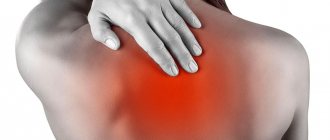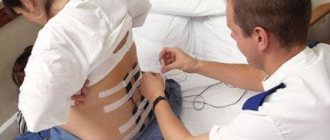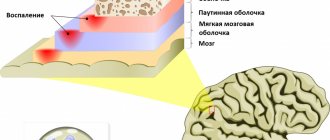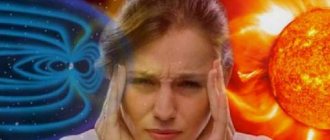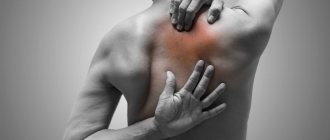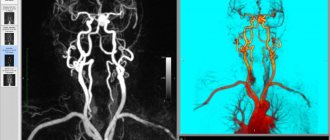Pain between the shoulder blades is not a typical location for back pain. As a rule, if your back hurts, then it hurts in the lumbar region or some specific vertebrae.
But compression, burning or pulsation in the upper back between the shoulder blades can cause confusion - such a problem is not heard and is rarely discussed. Therefore, a person who is faced with a similar situation searches on the Internet for answers to the questions “Why does my back hurt in the area of the shoulder blades? Which doctor should I consult for back pain between the shoulder blades? And how to treat pain in the shoulder blade?”
In just 6 minutes you will learn a lot more information on this topic and will know how to act in such a situation.
Pain in the shoulder blades: what could be the causes?
The average person is well aware of what the scapula is - a flat triangular paired bone in the upper back. But why does it hurt?
The most likely reasons could be:
- Spinal problems, injuries. Poor posture, curvature of the spinal column, and osteochondrosis lead to compression of nerve endings and the occurrence of pain symptoms.
- Diseases of the internal organs: pneumonia (pneumonia), pleurisy, angina pectoris, pericarditis, gastritis and gastric perforation due to ulcers are accompanied by severe pain in the upper back.
- Muscle problems: myalgia, muscle inflammation (myositis) cause nagging pain in the shoulder blades.
Why does my back hurt in the shoulder blade area? In addition to the above, pregnant women may experience pain in the shoulder blades at different stages, which is normal for them. But the problem can be more serious - neoplasms (both benign and malignant) in the chest or abdominal cavity can give similar symptoms. However, do not rush to panic and sound the alarm - even stress can indirectly lead to pain in the shoulder blades due to muscle strain and stooping. Such symptoms can be caused by excess weight, poor posture at work or while sleeping.
Types of pain between the shoulder blades
The symptom itself - that is, the nature of the pain in the shoulder blades - says a lot about the underlying disease. Pain can be acute, paroxysmal or chronic (constant), and it also varies in type and intensity.
Aching pain in the shoulder blade
In most cases, aching pain between the shoulder blades indicates pathology of the vertebrae and spine. Scoliotic deformities of the spinal column, osteochondrosis or herniated disc cause such symptoms. A peptic ulcer can also manifest itself as aching pain - in this case, you cannot do without a gastroenterologist.
Burning in the area of the shoulder blades
The occurrence of burning pain in the shoulder blades tells us about potential heart problems, for example, coronary heart disease. Such pain does not depend on movement, rarely lasts long and goes away soon after taking nitroglycerin. The second option is pinching of the nerve by intervertebral discs. Nitroglycerin will not help here, but non-steroidal anti-inflammatory drugs will help. Relief comes if you change your body position to a more comfortable one. In addition to the above, a burning symptom occurs when gastric contents reflux into the esophagus (reflux esophagitis).
Dull pain between the shoulder blades
As a rule, patients describe the pain that occurs due to pathology of tendons, ligaments and muscles with the word “dull.” The same characteristic is given to painful sensations in diseases of internal organs - cholecystitis or cholelithiasis.
Throbbing pain in the shoulder blade
Injury to the ribs, shoulder blades or vertebrae provokes the appearance of characteristic throbbing pain in the area of the shoulder blades. These painful symptoms may become more pronounced when sneezing or coughing. You should not hesitate to deal with such symptoms - you need to quickly contact a traumatologist.
Pressing pain in the shoulder blade
With inflammation in the muscles surrounding the scapula, a feeling of compression may occur. In addition to severe pain, myositis (inflammation of the muscle) leads to limited mobility of the shoulder and arm.
Sharp, sharp pain between the shoulder blades
An incipient stomach ulcer, an attack of biliary colic or pyelonephritis is manifested by a stabbing, sharp pain. In case of perforation of the ulcer, the pain begins in the stomach, accompanied by nausea, heartburn and bloating. With pleurisy, the patient will also notice a sharp pain in the area of the shoulder blades, but it will be complemented by a cough.
Pain when inhaling
If pain appears or intensifies during inhalation, this may signal us about lung disease or intercostal neuralgia. The pain with neuralgia has a shooting, encircling character. And with lung diseases, as a rule, the pain is accompanied by a cough, poor general health, weakness and fever.
Whatever the nature of the pain between the shoulder blades, if it does not subside within 1-1.5 days, it is recommended to visit a doctor.
Which doctor should I consult for back pain between the shoulder blades?
Since the etiology of pain between the shoulder blades is quite varied, the first thing you need to do is make an appointment with a therapist. The doctor will assess the situation, collect anamnesis, conduct an initial diagnostic examination and advise which specialist to contact for the most effective relief from pain in this localization.
Further treatment can be carried out by a traumatologist, orthopedist, neurologist, gastroenterologist, cardiologist, pulmonologist and other highly specialized specialists.
How is pain in the shoulder blades diagnosed?
In addition to collecting complaints, examining and carefully palpating (feeling) the causative area, the doctor may need to carry out a number of additional diagnostic measures:
- General and biochemical blood test, urine test.
- X-ray examination (if a deeper study is necessary, computed tomography (CT)).
- Magnetic resonance imaging (MRI) to assess the condition of internal organs, ligaments, tendons.
- Ultrasound diagnostics may be useful in determining kidney and bowel function.
- Electrocardiogram for diagnosing heart disease.
- Fluorography for suspected pulmonary problems.
- Gastroscopy to study the function of the stomach.
Back pain between the shoulder blades: treatment methods
Causes and treatment of interscapular pain
Periodic interscapular pain is a reason to visit a specialist. This will allow us to identify the cause and begin treatment as early as possible, since a considerable share of its success depends on this. Most people do not pay attention to this symptom, which ultimately leads to irreversible consequences, since untimely treatment is much less effective. When an acute attack of interscapular pain occurs, its severity often increases with inhalation and individual body movements. Chronic pain can be of varying degrees of intensity, which cannot but affect the quality of life.
Features of pain between the shoulder blades
When the cause of back pain is muscles, this is due to their increased tension and impaired blood flow in this area. Such pain can be easily eliminated by just doing a back massage. Even a light massage can relieve discomfort. Physical exercise has the same effect.
The cause of the aching pain is the periosteum or nerve endings. In this case, it appears not only between the shoulder blades, but also spreads to other areas of the back. Changing the posture or massage does not change the situation too much, and in some cases the pain radiates to the heart area, accompanied by numbness. For this reason, people mistake it for heart problems and start taking appropriate medications, instead of going to a specialist and treating the real cause.
The appearance of pain can be caused not only by the above reasons, but also by sedentary work, physical inactivity, lack of systematic physical activity such as fitness, improper lifting of weights, physical overload, and spinal injuries.
Diseases that cause interscapular pain
Interscapular pain is not a separate pathology. This is a symptom that indicates the presence of health problems. This syndrome occurs when there are adverse consequences of injuries. In this case, loss of sensitivity in various parts of the body and paralysis may occur.
Interscapular pain can appear with osteochondrosis, accompanied by calcifications that cause pressure on the nerves, which causes pain. With scoliosis, the resulting curvature of the spine causes pain radiating to the shoulder blades. Kyphosis and intervertebral hernia also provoke its occurrence. However, not only problems with the spine give rise to this symptom. The cause may be intercostal neuralgia, cancer, tuberculosis, polio, some heart diseases, late pregnancy, and professional characteristics.
Treatment methods
When interscapular pain occurs, it is enough to change your body position and do a few exercises. If circumstances permit, you can use the Kuznetsov applicator, massaging the corresponding area. It is common to apply warm compresses to the affected areas (for about an hour), after which the sore area is treated with an anti-inflammatory agent.
Drug therapy will help eliminate pain temporarily, but will not eliminate its cause, since this is only possible through an integrated approach. Treatment with anti-inflammatory drugs combined with local treatment with special ointments is relatively effective. If the above measures do not solve the problem, you should undergo a full examination of the body, which will determine further therapy.
Massage and manual therapy are considered a generally accepted panacea in such cases.
According to the specialist’s indications, physiotherapy is also used, which helps eliminate pain and the cause of the problem. Many folk remedies have also been invented to relieve this disease. They have been time-tested, which is a weighty argument in their defense, since they are still not recognized by official medicine. However, if there are no positive changes, you should contact a specialist. Author: K.M.N., Academician of the Russian Academy of Medical Sciences M.A. Bobyr
Treatment of pain between the shoulder blades
After reading this article, you understand that pain in the shoulder blades can be a sign of very different diseases. If you do not suffer from any chronic illness and are experiencing pain between the shoulder blades for the first time, then you can try to approach treatment symptomatically. First of all, make sure that you are not in a constant state of muscle tension due to an uncomfortable posture while sleeping or working. You can take a painkiller 1-2 times. However, if this does not help, you should no longer delay visiting the doctor.
How to relieve pain in the shoulder blades
When pain comes on suddenly and is disabling, the best thing you can do is try to relieve the pain. Taking analgesics (Nimesulide, Ibuprofen, Ketorolac) will temporarily relieve pain. You can apply an ointment with the same active ingredients to the painful area of the back.
We do not recommend massage or self-massage in such cases. We also do not recommend using any warming compresses or warming your back in any other way. All this can only make the problem worse.
How to treat shoulder blade pain
Treatment of the disease that provoked the symptom in the form of pain between the shoulder blades should be carried out by a doctor of the appropriate specialty. This can be a very serious pathology, and its treatment must be treated carefully. We will not delve into cardiology and gastroenterology, but will talk about restorative and restorative procedures that will be useful for any possible disease.
- Physiotherapy . In the rehabilitation of a patient after diseases of the spinal column and joints, a gradual return of the body to physical activity plays a huge role. Of course, this should not happen during an acute period of illness, when every movement is difficult. However, during the recovery stage, physical therapy and therapeutic exercises have a positive effect on the condition of the whole body by strengthening muscles and working out joints.
- Kinesiotherapy. For quick and functional recovery after injuries and diseases of the supporting system, kinesiotherapy is prescribed. This set of exercises with your own weight or with specialized simulators gently and without overloading the body helps restore the former mobility to damaged joints. In addition, the stimulating effect of kinesiotherapy on immunity and metabolism has been proven. Regular exercise can slow down the transition of the disease to the chronic stage and prevent relapse of the disease.
- Massotherapy. The beneficial effects of massage are difficult to overestimate. In addition to the physiological effect on the body, stroking and kneading muscles also have an effect on a person’s psychological state. And by stimulating blood circulation and metabolism, recovery occurs faster and more harmoniously.
- Acupuncture. An experienced acupuncturist is able to influence special points (acupuncture points), stimulating the body's internal reserves to fight the disease. The indications for the use of acupuncture are so wide that it is difficult to name a disease for which it would be ineffective. This is an effective way to get rid of pain, muscle tension and spasms. According to research, acupuncture in combination with other physiotherapeutic procedures can reduce the duration of treatment.
At the KANO physical therapy clinic in Minsk, we offer you the experience of our specialists, which they have collected and implemented in the “Healthy Back” rehabilitation program, thanks to which you can move again without pain and do what you love, or simply forget about the problem that has haunted you a lot years.
Sharp pain under the right shoulder blade
The appearance of severe pain in the area of the right shoulder blade should always be considered as a serious symptom and a sign of the development of an acute form of a particular disease. The following may appear in a similar way:
- Pinching of a nerve root that branches off from the spinal cord, passes through special foraminal openings of the spine and further branches into several branches, each of which is responsible for the innervation of a specific organ. This may be due to pathologies of the spine, in particular scoliosis, kyphosis, osteochondrosis and its complications.
- Intercostal neuralgia is a neurological disease in which the nerves running along the ribs are pinched, which provokes acute pain under the shoulder blade and in other parts of the body, often covering the entire right side.
- Acute pancreatitis is an acute inflammatory process in the pancreas, most often occurring during alcohol intoxication or exacerbation of cholelithiasis.
- Exacerbation of cholecystitis is an acute inflammatory process in the gallbladder, usually developing when stones form in it and are displaced. Even a slight movement of the stones can provoke sharp, severe pain under the ribs on the right side and under the shoulder blade. The pain syndrome is especially pronounced when stones move into the bile ducts. This may be accompanied by a bacterial infection, and if left untreated, lead to tissue necrosis, perforation and dangerously fatal peritonitis.
- Respiratory diseases - acute inflammatory processes in the lungs, especially affecting the pleura, can provoke the appearance of pain of varying severity under the scapula on the right.
The most obvious cause of acute pain under the shoulder blade on the right is injury. Therefore, if immediately before the onset of discomfort there was a blow to the back, shoulder blade or shoulder, you should immediately contact a traumatologist. In such a situation, not only a fracture of the scapula bone is possible, but also a muscle strain, which can provoke acute pain. For example, when you fall on your shoulder or dislocate it, 4 muscle groups are simultaneously injured, which, when performing movements, work synchronously and are responsible for performing different functions. Therefore, the tension of one of them will provoke the involvement of others, which will lead to the characteristic acute pain under the shoulder blade.
Pinched nerve
The most common disease of the spine is osteochondrosis, i.e. destruction of the cartilaginous structures located between the vertebrae - intervertebral discs. But it affects the thoracic spine least often. Therefore, often, due to the rarity of the development of osteochondrosis in this localization, doctors immediately rule it out and look for the problem elsewhere.
This tactic is justified in most cases, but in isolated situations it causes harm to the patient, since over time osteochondrosis can progress and lead to the formation of protrusions and intervertebral hernias. They cause pinching of the nerve root, which provokes acute pain under the shoulder blade, and seriously worsens the patient’s condition. At the same time, intervertebral hernias often require not only long-term complex conservative treatment, but also surgical intervention.
The following may indicate that pain under the scapula on the right is associated with damage to the intervertebral discs:
- the occurrence of swelling, even slight in this area;
- a sharp increase in pain when coughing, sneezing, laughing, sudden movement, or lifting a heavy object;
- reduction of pain at rest, especially in a supine position.
Pain caused by osteochondrosis tends to subside over time and reappear after heavy physical labor and eventually become a chronic aching, nagging pain. Degenerative-dystrophic changes that have already begun in the disc are constantly progressing, especially in the absence of treatment, and ultimately lead to deformation of the intervertebral disc. Initially, it protrudes (most often towards the spinal canal, where the spinal cord passes), forming a so-called protrusion. If provoking factors (hard physical labor, obesity, sedentary lifestyle) are not eliminated, over time, the internal contents of the disc rupture the outer shell and exit into the spinal canal, i.e., an intervertebral hernia is formed.
Both protrusion and herniation of the intervertebral disc can impinge on nerve roots and cause acute pain, and the pain is often burning and sharp. Therefore, if nagging, regularly occurring pain is replaced by an acute pain syndrome, you should definitely contact a vertebrologist or neurologist, as this most likely indicates the development of degenerative-dystrophic changes in the spine. It may also be accompanied by movement disorders and sensitivity disorders of certain parts of the body, for example, numbness of the skin, pain at the slightest touch, a crawling sensation, etc.
More often, acute pain under the scapula on the right is provoked by deformities of the spinal column - scoliosis and kyphosis. In the first case, we are talking about curvature of the ridge in the lateral plane with the formation of the so-called scoliotic arch. In the second, there is an aggravation of the physiological curvature of the spine. But in both situations, there is tonic muscle tension, which provokes pain under the scapula on the right. They tend to occur or intensify after prolonged sitting or standing in one position, that is, when creating a high static load on the spine.
You can suspect the presence of scoliosis by:
- habit of slouching;
- deviation of the spine from the central axis, which with low degrees of scoliosis cannot even always be noticed with the naked eye when bending forward;
- asymmetry of triangles of the waist, shoulder blades, pelvis.
With more severe curvatures of the spinal column, the changes become more and more noticeable, and the pain becomes stronger, more frequent and longer lasting.
Scoliosis is most often detected in childhood, but if left untreated it can progress over time and cause back pain in adulthood.
Kyphosis is an increase in the curvature of the natural curve of the spine in the thoracic region, exceeding 35°. It can develop independently or accompany scoliosis, and also be a consequence of compression fractures of the vertebrae of the thoracic spine, which is especially typical for older women, or bone tuberculosis.
Vertebral compression fracture is a common consequence of advanced osteoporosis, often found in older people. It is accompanied by flattening of the vertebral body with the formation of a wedge-shaped defect.
Externally, kyphosis is manifested by a constant stoop, drooping and forward-facing shoulders, as well as discomfort when trying to straighten the back and maintain this position. Treatment of the disease is usually conservative, including exercise therapy, manual therapy, and physiotherapy. But in particularly difficult cases, when spinal deformity causes complications or leads to persistent severe pain, surgical treatment is indicated.
If signs of kyphosis or scoliosis occur, it is recommended to consult an orthopedist or neurologist.
Intercostal neuralgia
Intercostal neuralgia is a fairly common disease, which can be triggered by both spinal pathologies and severe physical activity, stress, and back injuries. In this case, an exacerbation of the disease is usually provoked by a decrease in immunity and prolonged stay in an uncomfortable position.
With it, the pain in the area of the shoulder blade or along the entire rib is so sharp and burning that during an attack a person cannot fully breathe and move, and any change in body position provokes an increase in pain. This may be accompanied by increased sweating and tingling in the chest area. In such situations, you should contact a neurologist.
Acute pancreatitis
Most often, with acute pancreatitis, the pain is girdling and radiates to both shoulder blades at once. But sometimes only the head of the pancreas becomes inflamed, which leads to severe discomfort being felt mainly under the right shoulder blade. In this case, the pain can be shooting and be constantly present. Its severity is not affected by tension, coughing, or breathing, which makes it possible to differentiate it from spinal pathologies.
But during an attack of acute pancreatitis, patients try to take a forced position of the body on the left side, as this helps reduce pain. Severe nausea, vomiting, increased body temperature are also very often observed, and eating food contributes to a sharp increase in pain.
Since the pain in acute pancreatitis is very severe, such patients are often hospitalized in the surgical department, where they are diagnosed with inflammation of the pancreas. In the future, gastroenterologists are involved in the management of such patients.
Exacerbation of cholecystitis
With exacerbation of cholecystitis, usually, in addition to acute pain under the right shoulder blade, there is an increase in body temperature, as well as nausea and vomiting. The most striking manifestation of the disease is a slight yellowing of the skin, but this is not always observed. Therefore, it is impossible to exclude cholecystitis while maintaining normal skin color and mucous membranes.
Pain tends to occur and intensify with inhalation and movement, especially bending. They last more than 6 hours and are very powerful. A few hours after the onset of the attack, Murphy's symptom can be detected, i.e. a sharp increase in pain and involuntary holding of breath when pressing on the area of the right hypochondrium while taking a deep breath. This is usually combined with reflexive muscle tension in this area.
Just as with acute pancreatitis, with exacerbation of cholecystitis the pain is very powerful. Therefore, such patients often end up in surgery. If there are no indications for surgery to remove the gallbladder, a gastroenterologist treats cholecystitis.
Respiratory diseases
Inflammation of the lungs, tuberculosis and exudative pleurisy can provoke the appearance of acute pain in the right side of the back, including under the shoulder blade. As a rule, they are accompanied by fever, cough, shortness of breath and worsen during exertion, including coughing or deep breathing. In such situations, patients need to consult a therapist or pulmonologist. And if the examination shows the presence of tuberculosis, treatment should be carried out under the supervision of a phthisiatrician.
